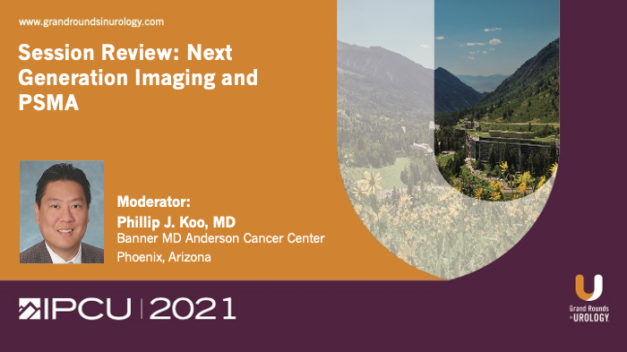PSMA: Current State of the Art and Future Vision
Phillip J. Koo, MD, Division Chief of Diagnostic Imaging and Northwest Region Oncology Physician Executive at the Banner MD Anderson Cancer Center in Phoenix, Arizona, discusses current and possible future applications for prostate-specific membrane antigen (PSMA) as both a diagnostic and a theranostic radiopharmaceutical for prostate cancer. He begins by considering PSMA in the diagnostic setting and explains that its current state-of-the art use is in the area of detection of metastatic disease. Dr. Koo particularly highlights its role in detecting oligometastatic disease in cases of biochemical recurrence. He also notes that PSMA currently has a role in initial staging, and that this role is likely to expand in the future. He predicts that other future diagnostic applications of PSMA will include restaging/treatment response, primary lesion characterization, and potentially prognosis. Dr. Koo then moves to discussing PSMA in the theranostic setting, mentioning the current role of Lu-177 PSMA on the “thera-” side and looking at PSMA, FDG, and PSMA plus FDG on the “-nostic” patient selection side. He also considers the question of whether imaging is even needed considering the large percentage of patients who are PSMA-positive, though he argues for the benefits of imaging. Dr. Koo lists some potential future therapeutic applications of PSMA, such as in earlier treatment, retreatment, combination therapy, dosimetry, and with alpha particles. He concludes that there are many unanswered questions, that conventional wisdom and anecdotes are not evidence-based, and that there is a need for more clinical trials and more disease site specialization within nuclear medicine.
Read More

